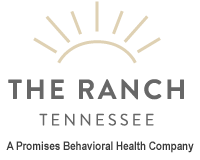Continued to take personal inventory, and when we were wrong promptly admitted it. Step ten in most respects is the logical culmination of the previous nine steps. In essence, the first nine steps are about stopping the bleeding of addiction, and then identifying and cleaning up the wreckage of our pasts. Step ten begins the process of living differently in the present. Essentially, it is an ongoing version of steps four through nine, where we take a quick inventory of a situation, identify our part in it, and, when necessary, either self-correct or make an amends. Happily, having worked steps four through nine already, we are familiar with this “inventory, assessment, change, and amends” process. The difference here is that step ten inventories deal with the present rather than the past, and the schedule for self-correcting or making an amends is “as soon as possible” rather than waiting until you are spiritually fit and the time is right. For most recovering addicts, step ten is a very unnatural process. As active addicts we rarely (if ever) engaged in self-examination and criticism. In fact, we avoided it like the plague. Even in recovery many of us sidestepped or delayed the process, putting off our step four inventory for weeks or months, sometimes even years. Of course, having finally completed steps four through nine, we now know the relief that that self-examination and self-correction brings us, and we are able to approach step ten with much less trepidation. Unlike most of the previous steps, step ten is one that is worked over and over, usually every day, sometimes more than once per day. In fact, steps ten, eleven, and twelve are all “daily practice” activities. For this reason, these steps are often referred to as “maintenance steps.” The idea is that steps one through nine will get you sober and spiritually fit, and steps ten through twelve will keep you that way. Yes, lots of recovering addicts do go back and re-work earlier steps (especially step four), but usually that is done on an annual basis or some other quite spread out schedule. Steps ten, eleven, and twelve are meant to be worked regularly, on an ongoing basis. Usually step ten is done both at the end of each day and on an as-needed basis. Let us examine the spot-check, as-needed inventory first. This type of tenth step recognizes that any time we are disturbed or upset there is something wrong with us or the situation around us that we need to examine. For instance, if we are at work and become angry with our boss, a fellow employee, or a client, we can work a quick tenth step, pausing to look at the situation, making special note of any part we have played in it. Once we have a better understanding of what is happening and our role in it, we can more easily deal with it in an appropriate fashion. Most recovering addicts who’ve learned to pause before acting in order to perform a quick tenth step inventory find that doing so typically prevents the sort of regrettable behaviors that later require an amends. For many of us, the short version of a tenth step spot-check is “stop, breathe, think, breathe, and then proceed.” Eventually, doing a spot-check tenth step becomes a reflex reaction to uncomfortable situations. When this occurs, life is less troublesome and more serene. As mentioned above, most recovering addicts also work the tenth step at the end of each day, looking back upon the events that have passed and assessing how they did. Here we are able to look at situations where we handled ourselves with class and dignity, as well as situations where we might do better in the future. Occasionally, we may realize that we owe someone an amends. In such cases we make that amends as soon as possible, either right away if it’s not too late in the evening, or the next morning. This end-of-day inventory is a way to keep our side of the street clean on an ongoing basis, and also a way to uncover character defects we may not have been previously aware of. Oftentimes tenth step inventories are performed as part of one’s daily spiritual practice. The concept of a daily spiritual practice will be discussed more thoroughly in with step eleven. For now, it is important to understand that the tenth step is not a step taken once and forgotten; instead, it is an ongoing, day-to-day (sometimes even moment-to-moment) tool of recovery.


